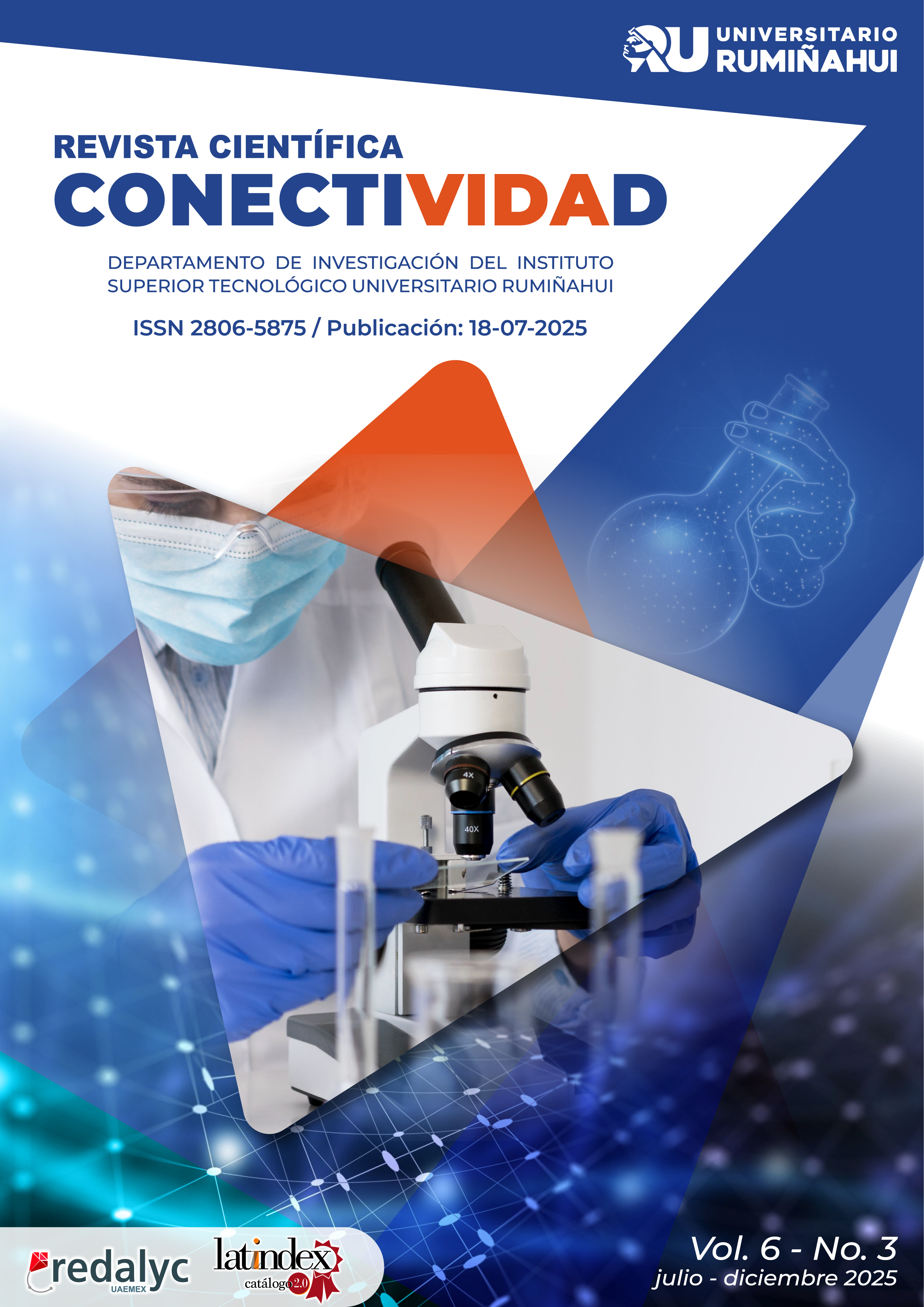Gamification as a strategy for improving the teaching-learning process in upper primary and secondary education
DOI:
https://doi.org/10.37431/conectividad.v6i3.242Keywords:
gamification, experimental, performance, digital tools, intrinsic motivationAbstract
The research aims to evaluate the influence of gamification on mathematics learning among students in upper secondary and high school levels. For this, a mixed quasi-experimental design was used with a group of 70 students from the Alejandro Andrade Coello Educational Unit. The students were divided into two groups: the experimental group, which participated in gamified activities, and the control group, which received traditional lessons. The difference lies in the application of digital tools such as Kahoot, Quizizz, and Classcraft, as well as physical resources like cards and interactive whiteboards in the experimental group. The results of a post-test evaluation show that the experimental group significantly improved academic performance, with a 26.5% increase compared to 5.9% in the control group. Additionally, gamification demonstrated an increase in student engagement and participation, leading to greater dedication and the ability to overcome academic challenges. The implementation of this strategy not only facilitated learning but also helped reduce school dropout rates by providing a more engaging and dynamic environment for students. These findings illustrate the effectiveness of gamification as an educational strategy to improve both academic performance and students' intrinsic motivation.
References
Cervantes, J. L. A., Romero, E. L. B., Calberto, L. I. M., & Peralta, S. R. T. (2023). Estrategias de enseñanza para el mejoramiento de la práctica docente en Latinoamérica. Revisión sistemática. Ciencia Latina Revista Científica Multidisciplinar, 7(2), Article 2. https://doi.org/10.37811/cl_rcm.v7i2.5553 DOI: https://doi.org/10.37811/cl_rcm.v7i2.5553
Chilán, A. G. G., & Zaldívar, M. A. B. (2024). Gamificación para favorecer el aprendizaje de la nomenclatura de óxidos metálicos en estudiantes de bachillerato. Educación Química, 35(1), Article 1. https://doi.org/10.22201/fq.18708404e.2024.1.86211 DOI: https://doi.org/10.22201/fq.18708404e.2024.1.86211
Cupuerán Yánez, E. R. (2023). La gamificación como estrategia didáctica innovadora para la enseñanza de las matemáticas en básica superior [masterThesis]. https://repositorio.utn.edu.ec/handle/123456789/14545
Gordillo, Á. R. G., & Vélez, M. L. C. (2024). Gamificación en el desarrollo de las competencias del currículo priorizado para la enseñanza de la Lengua y Literatura. Revista Uniandes Episteme, 11(4), Article 4. https://doi.org/10.61154/rue.v11i4.3624 DOI: https://doi.org/10.61154/rue.v11i4.3624
Lazo, C. W. G., Fernández, J. R. D., Ocampo, M. F. G., & Criollo, J. L. R. (2024). Una experiencia de Gamificación en la enseñanza-aprendizaje de límites de funciones en estudiantes de bachillerato. Religación, 9(40), Article 40. https://doi.org/10.46652/rgn.v9i40.1186 DOI: https://doi.org/10.46652/rgn.v9i40.1186
Moran Bejarano, M. M. (2024). La gamificacion como estrategia didáctica en la enseñanza de matemática a través de entornos virtuales para el mejoramiento del aprendizaje de los estudiantes de básica superior [masterThesis]. http://dspace.ups.edu.ec/handle/123456789/27497
Sigcha, C. D. R. (2024). La gamificación como estrategia didáctica para el fortalecimiento de la enseñanza - aprendizaje de la biología. Revista Latinoamericana Ogmios, 4(10), Article 10. https://doi.org/10.53595/rlo.v4.i10.099 DOI: https://doi.org/10.53595/rlo.v4.i10.099
Solórzano, D. V., & Gutiérrez, E. V. (2023). Gamificación como estrategia didáctica para el aprendizaje de operaciones básicas con números enteros. MQRInvestigar, 7(3), Article 3. https://doi.org/10.56048/MQR20225.7.3.2023.3950-3967 DOI: https://doi.org/10.56048/MQR20225.7.3.2023.3950-3967
Subiaga, G. G., & Vélez, J. M. (2024). Gamificación aplicada al mejoramiento del proceso enseñanza-Aprendizaje de Matemáticas en los estudiantes de Bachillerato. MQRInvestigar, 8(2), Article 2. https://doi.org/10.56048/MQR20225.8.2.2024.2647-2671 DOI: https://doi.org/10.56048/MQR20225.8.2.2024.2647-2671
Tacuri Ninacuri, E. N. (2022). Gamificación como estrategia educativa del proceso de enseñanza-aprendizaje de mecanismos de transmisión, en bachillerato. https://repositorio.puce.edu.ec/handle/123456789/9301
UNESCO. (2021). Estrategia de educación de la UNESCO, 2014-2021. https://unesdoc.unesco.org/ark:/48223/pf0000231288_spa
Published
How to Cite
Issue
Section
License
Copyright (c) 2025 Instituto Superior Tecnológico Universitario Rumiñahui

This work is licensed under a Creative Commons Attribution-NonCommercial 4.0 International License.
The originals published in the electronic edition under the first publication rights of the journal belong to the Instituto Superior Tecnológico Universitario Rumiñahui; therefore, it is necessary to cite the source in any partial or total reproduction. All the contents of the electronic journal are distributed under a Creative Commons Attribution-Noncommercial 4.0 International (CC-BY-NC 4.0) license.







2.png)






